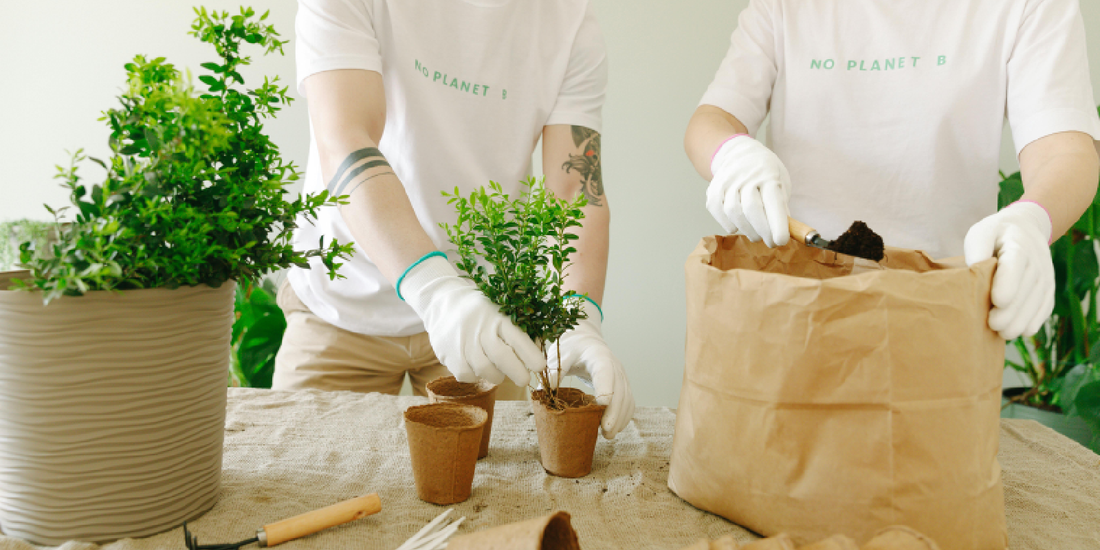
Using Grow Lights in Combination with Natural Light
Share
Indoor gardening has rapidly grown in popularity as more people bring nature into their homes and apartments. Whether you live in a compact city apartment or a spacious suburban house, integrating plants into your interior design brings vibrancy, improves air quality, and enhances overall well-being. However, a common challenge that plant lovers face is ensuring their plants get enough light to thrive. Natural sunlight alone often isn’t sufficient—especially for apartments with limited windows, north-facing rooms, or homes in regions with long winters.
This is where grow lights, when used in combination with natural light, become an essential solution. In this blog, we’ll explore the science behind combining artificial and natural light, how to set up a balanced system for your plants, and why products like the amoyls VerdantGlow S-Shaped 8-Tier Plant Shelf with Grow Lights can be a game changer for creating a thriving indoor garden.
Why Light Matters for Plant Growth
Light is the primary driver of photosynthesis—the process by which plants convert light energy into chemical energy to fuel their growth. Without sufficient light, plants become leggy, weak, and pale. Natural sunlight provides a full spectrum of wavelengths that support every stage of plant growth, from seedling development to flowering.
However, indoor conditions rarely replicate the intensity and duration of sunlight found outdoors. Buildings, furniture, and window placements all limit the amount of usable light that plants receive. This is why supplementing with artificial grow lights is not just beneficial but often necessary for healthy indoor gardening.
The Role of Natural Light Indoors
Natural light is free, abundant, and familiar to plants. For indoor gardeners, it provides an essential baseline of energy. However, several limitations exist:
- Direction and Intensity – South-facing windows often provide the most light, while north-facing ones give very little. The farther plants are placed from the window, the weaker the intensity becomes.
- Seasonal Variability – In winter, daylight hours are shorter, and sunlight intensity is significantly lower.
- Obstructions – Buildings, curtains, or tinted glass can reduce the amount of usable light entering the space.
While natural light is valuable, it’s inconsistent. This is why grow lights are used to bridge the gap.
What Grow Lights Provide That Natural Light Can’t
Artificial grow lights are engineered to mimic the sun’s spectrum and intensity. They allow gardeners to control both the duration and quality of light exposure, which is crucial for photosynthesis and plant health. Modern LED grow lights, like those integrated into the VerdantGlow S-Shaped 8-Tier Plant Shelf, provide full-spectrum coverage that closely resembles natural daylight while being energy-efficient.
Some specific advantages include:
- Consistency – Grow lights deliver stable light year-round regardless of weather or seasons.
- Spectrum Control – Many LED systems allow adjustment between blue (for vegetative growth) and red (for flowering).
- Placement Flexibility – Lights can be positioned above or around plants, ensuring every leaf gets sufficient exposure.
The Science of Combining Natural and Artificial Light
When you combine natural sunlight with grow lights, plants receive the best of both worlds. The natural spectrum provides familiar wavelengths, while grow lights extend exposure and fill in gaps caused by weak or indirect sunlight.
For example, if your living room gets morning light for 4–5 hours, you can use grow lights to extend the photoperiod to 12–14 hours, ensuring your plants achieve optimal daily light intake. This balance prevents growth stagnation and encourages lush, vibrant foliage.
Practical Tips for Combining Grow Lights with Natural Light
-
Observe Your Natural Light Patterns
Track where and when sunlight enters your home. Morning and afternoon light vary in intensity, so knowing your plant’s position helps determine supplemental needs. -
Choose the Right Duration
Most indoor plants need 12–16 hours of total light per day. If your window provides 5 hours, run your grow lights for an additional 7–10 hours. -
Position Grow Lights Properly
Grow lights should typically be placed 6–12 inches above plants for maximum effect, depending on intensity. Adjustable shelves like the VerdantGlow Plant Shelf make this easy. -
Consider Plant Type
Herbs, succulents, and flowering plants have different light requirements. High-light plants may need stronger or longer artificial supplementation. -
Balance Aesthetics and Function
A thoughtfully designed system not only supports plant health but also integrates seamlessly into your living space. This is where functional yet elegant designs become essential.
Why the amoyls VerdantGlow Plant Shelf is Ideal for Mixed Light Environments
The VerdantGlow S-Shaped 8-Tier Plant Shelf with Grow Lights is specifically designed for modern indoor gardeners who want both style and functionality. Here’s why it stands out:
- Integrated Grow Lights – Each tier comes with full-spectrum LEDs, ensuring plants at every level get sufficient exposure.
- Space-Saving S-Shaped Design – At 62” tall, this vertical shelf maximizes vertical space while keeping a small floor footprint.
- Blend with Natural Light – Its open structure allows sunlight to reach plants while grow lights supplement where needed.
- Durability and Stability – Made from high-quality materials, it holds multiple plants securely.
- Modern Aesthetic – Unlike bulky standalone light rigs, this shelf blends seamlessly into living rooms, offices, or studios.
By combining natural window light with built-in LEDs, VerdantGlow creates an ecosystem where plants thrive year-round, regardless of outdoor conditions.
Case Study: Combining Sunlight with Grow Lights at Home
Imagine a living room with a large east-facing window. In the morning, sunlight pours in for about 4 hours. Placing the VerdantGlow Shelf near the window ensures plants receive natural rays during this time. After midday, when sunlight fades, the integrated grow lights automatically take over, extending light exposure until evening.
This dual-light system provides consistency, reduces plant stress, and creates a lush green centerpiece in your home. Over time, plants become healthier, leaves appear more vibrant, and flowering cycles stabilize.
Common Mistakes to Avoid
- Overexposure – Too much artificial light without considering natural light can stress plants. Always balance the total daily exposure.
- Wrong Spectrum – Using non-full-spectrum lights (like standard bulbs) can result in weak growth.
- Ignoring Placement – Light must reach all plant surfaces, not just the top leaves.
- Inconsistent Schedule – Plants thrive on routine. Use timers to regulate grow light cycles.
Conclusion: A Balanced Approach is Key
By combining natural sunlight with modern grow lights, indoor gardeners can overcome the challenges of limited daylight and seasonal changes. The result is healthier, greener, and more resilient plants.
The amoyls VerdantGlow S-Shaped 8-Tier Plant Shelf with Grow Lights is not just a functional solution—it’s a design-forward piece that transforms plant care into an elegant part of your home’s aesthetic.
Whether you are cultivating herbs for your kitchen, creating a green wall in your living room, or simply enjoying the beauty of houseplants, a balanced light strategy ensures long-term success.
